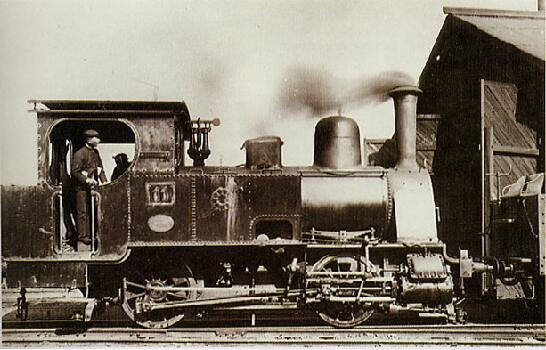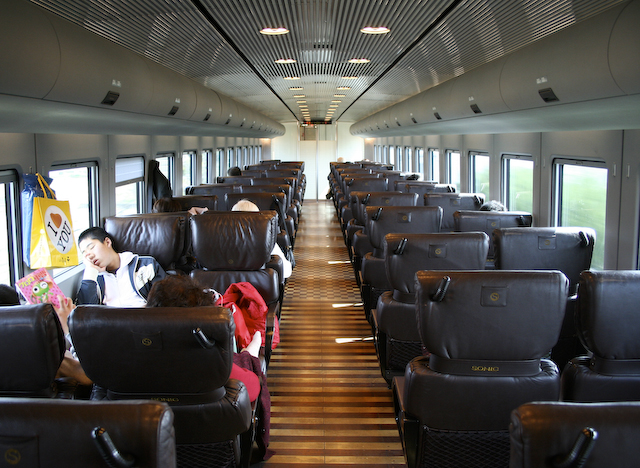|
Nagasaki Station (Nagasaki)
is a railway station in Nagasaki, Nagasaki Prefecture, Japan, operated by the Kyushu Railway Company (JR Kyushu). It is the terminus of the Nishi Kyushu Shinkansen and the Nagasaki Main Line. The station is connected by the ''Kamome'' Shinkansen service and the '' Relay Kamome'' limited express to Hakata, and by the ''Seaside Liner'' rapid service to Sasebo. Nagasaki Electric Tramway services call at a stop in front of the station. Lines * Nishi Kyushu Shinkansen * Nagasaki Main Line Station layout The conventional line station has two elevated island platforms serving five tracks. The Shinkansen station has two island platforms serving four tracks. Platforms History The station was opened on 5 April 1905 when the railway was extended from the former Nagasaki Station to the present station. The former station, opened in 1897, was renamed Urakami Station. *5 April 1905 - Opened by Kyushu Railway. *1 July 1907 - The railways are nationalized and the station becomes part o ... [...More Info...] [...Related Items...] OR: [Wikipedia] [Google] [Baidu] |
Nagasaki, Nagasaki
is the capital and the largest city of Nagasaki Prefecture on the island of Kyushu in Japan. It became the sole port used for trade with the Portuguese and Dutch during the 16th through 19th centuries. The Hidden Christian Sites in the Nagasaki Region have been recognized and included in the UNESCO World Heritage List. Part of Nagasaki was home to a major Imperial Japanese Navy base during the First Sino-Japanese War and Russo-Japanese War. Near the end of World War II, the American atomic bombings of Hiroshima and Nagasaki made Nagasaki the second and, to date, last city in the world to experience a nuclear attack (at 11:02 am, August 9, 1945 'Japan Standard Time (UTC+9)'). , the city has an estimated population of 407,624 and a population density of 1,004 people per km2. The total area is . History Nagasaki as a Jesuit port of call The first contact with Portuguese explorers occurred in 1543. An early visitor was Fernão Mendes Pinto, who came from Sagres on ... [...More Info...] [...Related Items...] OR: [Wikipedia] [Google] [Baidu] |
Saga Station
is a railway station on the Nagasaki Main Line in Saga, Saga Prefecture, Japan, operated by the Kyushu Railway Company (JR Kyushu). Trains from this station also serve the Sasebo and Karatsu Lines. Layout This is an elevated station with two island platforms serving four tracks. The station building and concourse are below the platforms. Platforms Adjacent stations History The station was opened on 20 August 1891 by the private Kyushu Railway as the western terminus of a line from . It became a through station on 5 May 1895 when the track was extended west to Yamaguchi (today ) and Takeo (today ). When the Kyushu Railway was nationalized on 1 July 1907, Japanese Government Railways (JGR) took over control of the station. On 12 October 1909, the station became part of the Nagasaki Main Line. On 25 May 1935, the station also became part of the Saga Line when the track from Yabekawa (today to Chikugo-Ōgawa was extended north to Saga. The Saga Line was closed on 28 March 19 ... [...More Info...] [...Related Items...] OR: [Wikipedia] [Google] [Baidu] |
Twenty-six Martyrs Of Japan
The were a group of Catholics who were executed by crucifixion on February 5, 1597, in Nagasaki, Japan. Their martyrdom is especially significant in the history of the Catholic Church in Japan. A promising beginning to Catholic missions in Japan – with perhaps as many as 300,000 Catholics by the end of the 16th century – met complications from competition between the missionary groups, political difficulty between Portugal and Spain and factions within the government of Japan. Christianity was suppressed and it was during this time that the 26 martyrs were executed. By 1630, Catholicism had been driven underground. When Christian missionaries returned to Japan 250 years later, they found a community of " hidden Catholics" that had survived underground. Early Christianity in Japan On August 15, 1549, the Jesuit fathers Francis Xavier (later canonized by Gregory XV in 1622), Cosme de Torres, and Juan Fernández arrived in Kagoshima, Japan, from Portugal with hopes of bringi ... [...More Info...] [...Related Items...] OR: [Wikipedia] [Google] [Baidu] |
Route 202 (Japan)
National Route 202 is a national highway of Japan connecting Hakata-ku, Fukuoka and Nagasaki, Nagasaki is the capital and the largest city of Nagasaki Prefecture on the island of Kyushu in Japan. It became the sole port used for trade with the Portuguese and Dutch during the 16th through 19th centuries. The Hidden Christian Sites in the Na ... in Japan, with a total length of 199.6 km (124.03 mi). References National highways in Japan Roads in Fukuoka Prefecture Roads in Nagasaki Prefecture Roads in Saga Prefecture {{Japan-road-stub ... [...More Info...] [...Related Items...] OR: [Wikipedia] [Google] [Baidu] |
Nagasaki Ekimae Station 2010A
is the capital and the largest city of Nagasaki Prefecture on the island of Kyushu in Japan. It became the sole port used for trade with the Portuguese and Dutch during the 16th through 19th centuries. The Hidden Christian Sites in the Nagasaki Region have been recognized and included in the UNESCO World Heritage List. Part of Nagasaki was home to a major Imperial Japanese Navy base during the First Sino-Japanese War and Russo-Japanese War. Near the end of World War II, the American atomic bombings of Hiroshima and Nagasaki made Nagasaki the second and, to date, last city in the world to experience a nuclear attack (at 11:02 am, August 9, 1945 'Japan Standard Time (UTC+9)'). , the city has an estimated population of 407,624 and a population density of 1,004 people per km2. The total area is . History Nagasaki as a Jesuit port of call The first contact with Portuguese explorers occurred in 1543. An early visitor was Fernão Mendes Pinto, who came from Sagres on a ... [...More Info...] [...Related Items...] OR: [Wikipedia] [Google] [Baidu] |
Atomic Bombing Of Hiroshima And Nagasaki
The United States detonated two atomic bombs over the Japanese cities of Hiroshima and Nagasaki on 6 and 9 August 1945, respectively. The two bombings killed between 129,000 and 226,000 people, most of whom were civilians, and remain the only use of nuclear weapons in armed conflict so far. In the final year of World War II, the Allies prepared for a costly invasion of the Japanese mainland. This undertaking was preceded by a conventional and firebombing campaign that devastated 64 Japanese cities. The war in the European theatre concluded when Germany surrendered on 8 May 1945, and the Allies turned their full attention to the Pacific War. By July 1945, the Allies' Manhattan Project had produced two types of atomic bombs: "Fat Man", a plutonium implosion-type nuclear weapon; and "Little Boy", an enriched uranium gun-type fission weapon. The 509th Composite Group of the United States Army Air Forces was trained and equipped with the specialized Silverplate version of t ... [...More Info...] [...Related Items...] OR: [Wikipedia] [Google] [Baidu] |
Japanese National Railways
The abbreviated JNR or , was the business entity that operated Japan's national railway network from 1949 to 1987. Network Railways As of June 1, 1949, the date of establishment of JNR, it operated of narrow gauge () railways in all 46 prefectures of Japan. This figure expanded to in 1981 (excluding Shinkansen), but later reduced to as of March 31, 1987, the last day of JNR. JNR operated both passenger and freight services. Shinkansen Shinkansen, the world's first high-speed railway was debuted by JNR in 1964. By the end of JNR in 1987, four lines were constructed: ; Tōkaidō Shinkansen: , completed in 1964 ; Sanyō Shinkansen: , completed in 1975 ; Tōhoku Shinkansen: , as of 1987 ; Jōetsu Shinkansen: , completed in 1982 Buses JNR operated bus lines as feeders, supplements or substitutions of railways. Unlike railway operation, JNR Bus was not superior to other local bus operators. The JR Bus companies are the successors of the bus operation of JNR. Ships JNR o ... [...More Info...] [...Related Items...] OR: [Wikipedia] [Google] [Baidu] |
Japanese Government Railways
The Japanese Government Railways (JGR) was the national railway system directly operated by the Japanese Ministry of Railways ( ja, 鉄道省, Tetsudō-shō, ) until 1949. It was a predecessor of Japanese National Railways and the later Japan Railways Group. Name The English name "Japanese Government Railways" was what the Ministry of Railways (established in 1920) used to call its own and sometimes the ministry itself as a railway operator. Other English names for the government railways include Imperial Japanese Government Railways and Imperial Government Railways, which were mainly used prior to the establishment of the ministry. This article covers the railways operated by the central government of Japan from 1872 to 1949 notwithstanding the official English name of the system of each era. Network By the end of World War II in 1945, the Japanese Government Railways operated on the main Japanese islands of Honshū, Hokkaidō, Kyūshū, Shikoku and Karafuto. The railways ... [...More Info...] [...Related Items...] OR: [Wikipedia] [Google] [Baidu] |
Kyushu Railway
was a company that built and operated railways in Kyushu, one of four main islands of Japan. Most of its lines came under the control of Japanese Government Railways following nationalization in 1907, and many are now operated by Kyushu Railway Company. History The company was incorporated on August 15, 1888 in Fukuoka, Fukuoka. The first of the railway, between Hakata Station in Fukuoka and Chitosegawa temporary station in Asahi, Saga (near Kurume, Fukuoka), opened on December 11, 1889 as the first railway in Kyushu. The company expanded the railway by means of both construction and acquisition of other companies. As of 1907, it operated of railways in Fukuoka, Kumamoto, Nagasaki, Ōita and Saga prefectures in northern Kyushu. On July 1, 1907, the entire operation of the company was purchased by the government of Japan under the Railway Nationalization Act. Consequently, the company was dissolved. List of lines Rolling stock A special coach made by German car manufacture ... [...More Info...] [...Related Items...] OR: [Wikipedia] [Google] [Baidu] |
Urakami Station
is a railway station in Kawaguchi-chō, Nagasaki, Nagasaki Prefecture, Japan. It is operated by JR Kyushu and is on the Nagasaki Main Line. It is the station where the old line and new line sections of the Nagasaki Line intersect. In front of the station is the Urakami Ekimae stop on the Nagasaki Electric Tramway. Layout Urakami Station has a single elevated island platform servicing two tracks. The station entrance and ticketing area are located on the ground level with the platforms on the upper level. There are two automatic ticket machines, a ''Midori no Madoguchi'' ticket office and two SUGOCA card readers instead of automatic ticket gates. Surrounding area In front of the station is the Urakami Ekimae stop of the Nagasaki Electric Tramway. Behind the station is a hospital, and nearby are condos, concert halls, broadcast stations and schools among other things. Many of the people who use this station are commuters to these places. Educational facilities *Kassui ... [...More Info...] [...Related Items...] OR: [Wikipedia] [Google] [Baidu] |
Kamome (train)
is a limited express train operated by JR Kyushu in Japan. It operates between Hakata and Nagasaki on the Kagoshima Main Line and the Nagasaki Main Line. ''Kamome'' means seagull in Japanese. As of 23 September 2022, the name was inherited by the new Shinkansen service to Nagasaki, at which point the remaining limited express services between Takeo-Onsen and Hakata were renamed ''Relay Kamome''. History The ''Kamome'' name (written as "鷗") was first used from 1 July 1937 on limited express trains operating between Tokyo and Kobe. This service continued until February 1943. The name (written as "かもめ") was subsequently revived from 15 March 1953 for use on limited express services operating between Kyoto and Hakata. This service was discontinued in March 1975 with the completion of the Sanyō Shinkansen to Hakata. On 1 July 1976, with the electrification of the Nagasaki Main Line, services resumed (initially between Kokura and Nagasaki, later between Hakata and Na ... [...More Info...] [...Related Items...] OR: [Wikipedia] [Google] [Baidu] |
Takeo-Onsen Station
is a railway station operated by Kyushu Railway Company (JR Kyushu) in Takeo, Saga, Japan. It is operated by JR Kyushu and is served by the Nishi Kyushu Shinkansen and the Sasebo Line. Lines The station is served by the Sasebo Line and is located 13.7 km from the starting point of the line at . Besides the local services on the Sasebo Line, the JR Kyushu Limited Express services ''Midori'' (from to ) and ''Huis Ten Bosch'' (from to ) also stop at this station. The Nishi Kyushu Shinkansen to and from also terminates here. Services to and from are additionally provided with the Limited Express ''Kamome, Relay Kamome'' service, with a cross-platform transfer for Nishi Kyushu Shinkansen passengers. Station layout The station building consists of two side platforms serving two elevated tracks. The station complex has entrances north and south of the tracks and is a modern structure completed in 2009. The Nishi Kyushu Shinkansen has an island platform and a side platform se ... [...More Info...] [...Related Items...] OR: [Wikipedia] [Google] [Baidu] |

.png)







